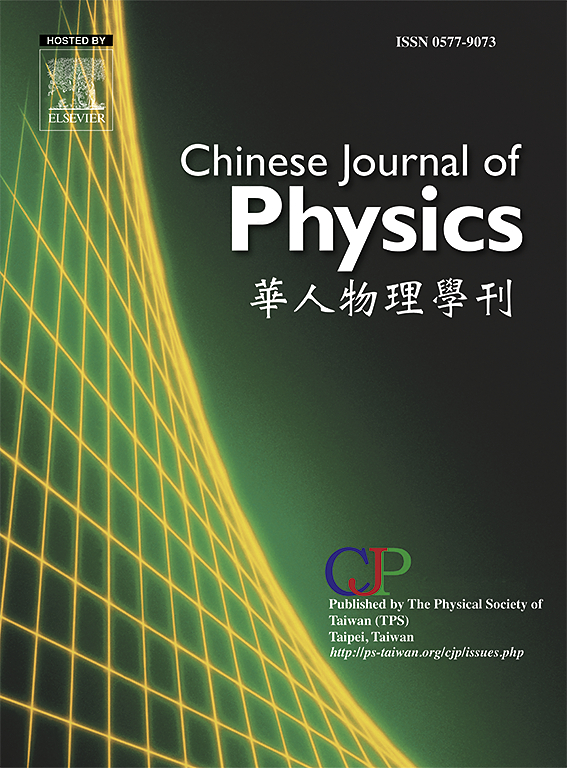双频圆极化介质谐振器天线(DRA)轴向比的机器学习预测
IF 4.6
2区 物理与天体物理
Q1 PHYSICS, MULTIDISCIPLINARY
引用次数: 0
摘要
本文设计了一种非对称介质谐振器天线(DRA),在c波段(4 - 8ghz)和x波段(8 - 12ghz)范围内实现双频圆极化。采用基于回归的机器学习(ML)技术预测天线的轴向比。DRA结构由三个均匀介电常数为9.8的矩形陶瓷块组成,由微带馈线激励。两个不同高度的介电谐振器(DR)放置在同一平面上,而第三个DR位于前两个的顶部,具有60°旋转,从而在两个频带上实现宽3db轴向比(AR)带宽。天线工作在5.2 GHz到12.0 GHz,实现了79%的10 dB阻抗带宽。AR带宽(≤3db)跨越6.0 ~ 8.7 GHz(下带)和9.9 ~ 11.8 GHz(上带)两个频段。天线在整个带宽范围内保持超过4 dBi的增益。此外,对天线进行了阵列配置分析,并通过仿真验证了30°波束转向。通过参数扫描分析,生成了包含各种天线尺寸及其相应轴比值的数据集。然后采用基于监督回归的ML方法来预测两个圆极化频率:7.2 GHz和10.5 GHz的轴比。对几种回归算法进行了测试,Extra Trees回归模型的预测误差最小,预测精度最高。本文章由计算机程序翻译,如有差异,请以英文原文为准。

Prediction of axial ratio using machine learning (ML) for a dual-band circularly polarized dielectric resonator antenna (DRA)
In this paper, an asymmetrical dielectric resonator antenna (DRA) is designed to achieve circular polarization at dual frequencies within the C-band (4–8 GHz) and X-band (8–12 GHz) ranges. A regression-based machine learning (ML) technique is employed to predict the antenna’s axial ratio. The DRA structure consists of three rectangular ceramic blocks with a uniform permittivity of 9.8 and is excited by a microstrip feedline. Two dielectric resonators (DRs) of different heights are placed on the same plane, while the third DR is positioned atop the first two with a 60° rotation, enabling a wide 3 dB axial ratio (AR) bandwidth across both bands. The antenna operates from 5.2 GHz to 12.0 GHz, achieving a 10 dB impedance bandwidth of 79%. The AR bandwidth (≤ 3 dB) spans two bands: 6.0–8.7 GHz (lower band) and 9.9–11.8 GHz (upper band). The antenna maintains a gain of over 4 dBi throughout the bandwidth. Additionally, the antenna is analyzed in an array configuration, and beam steering at 30° is demonstrated through simulation. A dataset comprising various antenna dimensions and their corresponding axial ratio values is generated using parametric sweep analysis. A supervised regression-based ML approach is then employed to predict the axial ratio at two circularly polarized frequencies: 7.2 GHz and 10.5 GHz. Several regression algorithms are tested, and the Extra Trees Regression model achieves the lowest prediction error and highest accuracy.
求助全文
通过发布文献求助,成功后即可免费获取论文全文。
去求助
来源期刊

Chinese Journal of Physics
物理-物理:综合
CiteScore
8.50
自引率
10.00%
发文量
361
审稿时长
44 days
期刊介绍:
The Chinese Journal of Physics publishes important advances in various branches in physics, including statistical and biophysical physics, condensed matter physics, atomic/molecular physics, optics, particle physics and nuclear physics.
The editors welcome manuscripts on:
-General Physics: Statistical and Quantum Mechanics, etc.-
Gravitation and Astrophysics-
Elementary Particles and Fields-
Nuclear Physics-
Atomic, Molecular, and Optical Physics-
Quantum Information and Quantum Computation-
Fluid Dynamics, Nonlinear Dynamics, Chaos, and Complex Networks-
Plasma and Beam Physics-
Condensed Matter: Structure, etc.-
Condensed Matter: Electronic Properties, etc.-
Polymer, Soft Matter, Biological, and Interdisciplinary Physics.
CJP publishes regular research papers, feature articles and review papers.
 求助内容:
求助内容: 应助结果提醒方式:
应助结果提醒方式:


